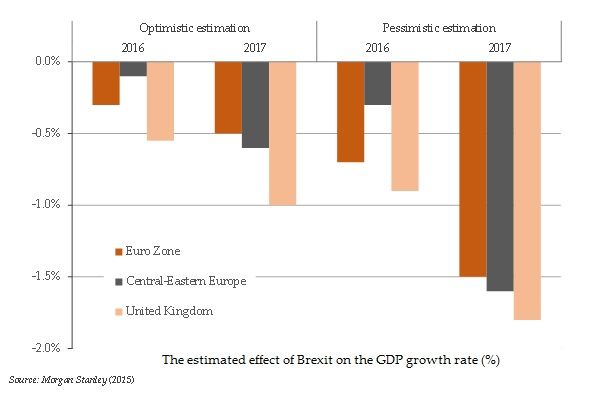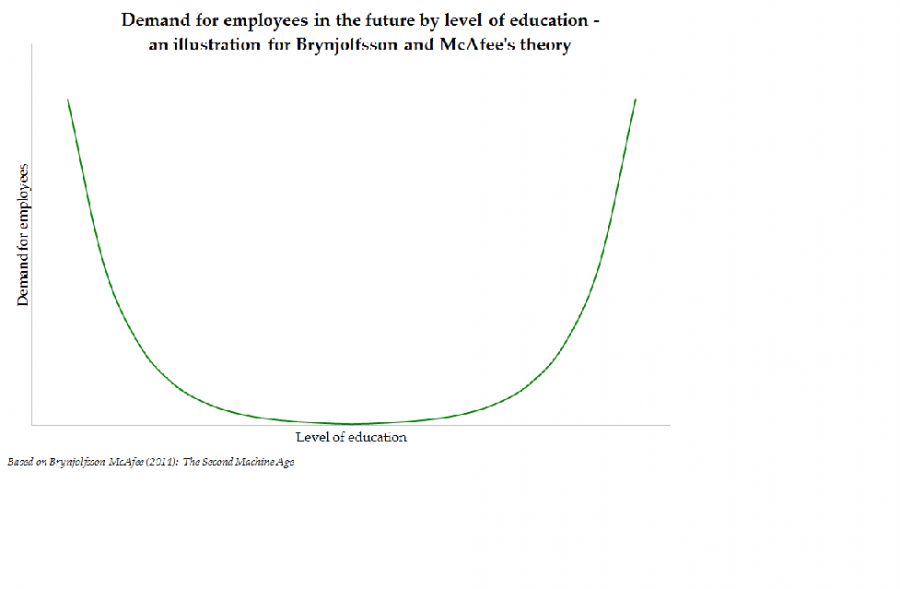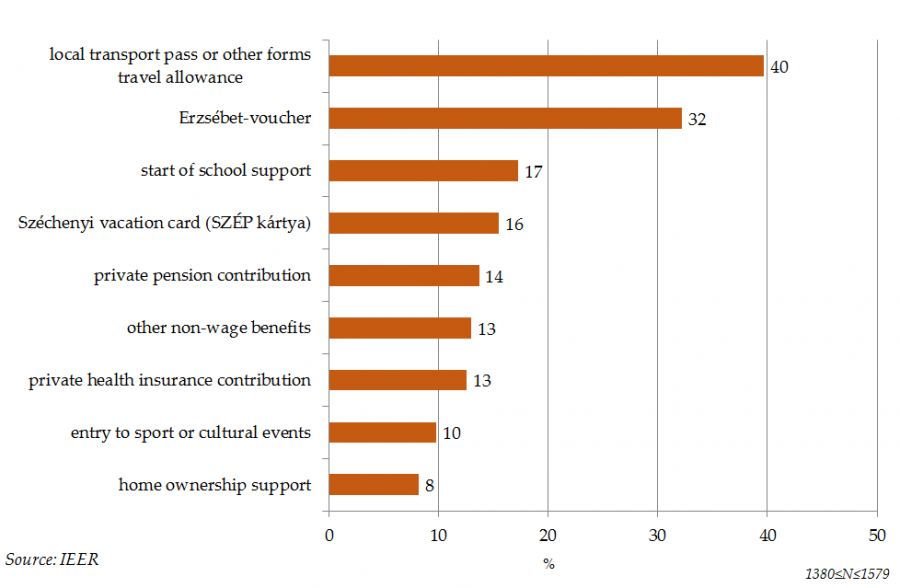- Research fields
- Further Research Areas
- Research year
- Related documents
A GVI elemzésében a legjobb hazai gimnáziumok diákjainak továbbtanulási terveit vizsgálja. Az eredmények szerint a tanulók döntő többsége szeretne továbbtanulni, mégpedig hazai felsőoktatási intézményben és csupán 7%-uk jelentkezik külföldre (is). A rendelkezésünkre álló statisztikai adatok szintén azt jelzik, hogy a magyar diákok nem vesznek részt nagy számban (hosszú távú) külföldi képzésekben, azonban számuk növekvő tendenciát mutat az utóbbi években.
Read more >>>The result of the June 23th United Kingdom referendum shocked the world. The sudden drop in the exchange rate of the British Pound on the following days supports this very clearly (see Figure 1, 23 to 30 June 2016). In the following brief analysis we describe potential effects of Brexit that may have an impact on Hungary in the medium term. In our work we summarize the conclusions of the Hungarian and international literature related to the UK’s withdrawal from the European Union. The most obvious result of the referendum so far is the financial and political uncertainty that is dominating Europe. Another effect may be a significant decline in the Hungarian Gross Domestic Product in 2016 and the next few years.
Read more >>>The results of the latest IEER SME Outlook business climate survey reveal less favourable economic conditions compared to the previous quarter: the Business Climate Index decreased from 31 to 27 points. Thus the upward trend since last October was broken. While enterprises regard their current situation more favourable compared to the previous quarter, they consider their future prospects more negatively than in April. It means that the SME sector predicts a turning point in the trends of domestic business climate.
The Uncertainty Index is at a current level of 36 points, which is almost the same as the value measured in the preceding quarter (it was 37 points in April 2016). The value of the Uncertainty Index indicates that the current trend is not uniform within the private sector, and that it will continue to be confined to one part of the economy and will not be felt by all small and medium sized companies.
Read more >>>The results of the latest quarterly business climate survey reveal slightly less favourable economic condition compared to the previous quarter: the IEER Quarterly Business Climate Index decreased from 33 to 30 points, thus the upward trend since October 2015 has been broken. According to the results the enterprises see their future prospects – not their current situation – more pessimistic than in April, that is, they predict the deterioration of the so far favourable business climate. The Business Climate Index was only 21 points in the same period of the previous year.
The Uncertainty Index is at a current level of 34 points, which is slightly lower than in the previous quarter (it was 35 points in April 2016). The value of the Uncertainty Index indicates that the current trend is not uniform within the private sector, and that it will continue to be confined to one part of the economy and will not be felt by all companies.
Read more >>>A recent analysis from the Institute for Economic and Enterprise Research (IEER) of the Hungarian Chamber of Commerce and Industry (HCCI) examined the experiences of late payment and debt queues of domestic enterprises. The results are based on data from the IEER January 2016 Quarterly Business Climate Survey during which we asked 400 domestic enterprises about the topic. The results show that 81% of businesses had at least one business partner that paid late in 2015, while 45% of respondents themselves owed to their suppliers at least once in the period under review. The highest proportion of late payments was among small businesses and the construction sector. From the combined results of the last few years, though, it appears that the situation of companies in terms of late payments has improved: the number of business partners paying late has declined on average as well as the amounts outstanding. The proportion of companies that could not pay their suppliers on time at least once because of a late payment by their customers is also in decline
Read more >>>The IEER analysis examines plans for further education of students from the nation’s best high schools. The results show that a vast majority of students want to continue their education, namely at national institutions of higher education, and only 7% of them would study abroad (as well). The available statistics also indicate that Hungarian students do not participate in large numbers in (long-term) foreign study, but in recent years their numbers show a growing trend.
Read more >>>In its ongoing analysis of Hungarian companies, the Institute for Economic and Enterprise Research examined the practices relating to the use of fringe benefits among domestic enterprises. The analysis is based on the data of the April 2016 Business Climate survey of 2800 domestic enterprises which were questioned in relation to the non-wage benefits they provide. The results show that 55% of companies with a minimum of one employee provided at least one form of fringe benefits in 2016, the most popular non-wage benefits being considered were local travel allowances and the Erzsébet vouchers (food coupons, but sometimes used for non-food purchases). The use of fringe benefits is associated with a company's size, the economic sector it operates in, and its level of foreign ownership, as well as a firm’s business situation: the highest proportion of those that provide fringe benefits are typically medium and large sized companies, those that are foreign-owned, firms operating in the manufacturing sector, and those in a good business situation. For 83% of responding companies, the amount allocated to fringe benefits has not changed over the past year. Those companies which has cut the wages during 2015 has not risen the non-wage benefits either and one third them has cut the amount allocated to fringe benefits as well which means that Hungarian companies do not use fringe benefits as a compensation.
Read more >>>The development of machines and algorithms launched a new industrial revolution that is taking place today. However, there are concerns that society will adapt to this process slower than it did to the previous industrial revolutions or even may not be able to adapt at all. The reason of these assumptions is the exponential acceleration of development. The process could bring serious changes to the labor market. On the one hand we can expect that some professions will cease to exist new ones will come about; on the other hand it can change the distribution of workforce among occupations. The modernization of education could help society to prepare for these changes, but it seems we cannot keep up with this development.
Read more >>>In its ongoing analysis of Hungarian companies, the Institute for Economic and Enterprise Research (IEER) examined the practices relating to the use of fringe benefits among domestic enterprises. The analysis is based on the data of the April 2016 Business Climate survey of 1,771 domestic enterprises employing at least one person; they were questioned in relation to the non-wage benefits they provide. The results show that 55% of companies with a minimum of one employee provided at least one form of fringe benefits in 2016, the most popular non-wage benefits being considered were local travel allowances and the Erzsébet vouchers (food coupons, but sometimes used for non-food purchases). The use of fringe benefits is associated with a company's size, the economic sector it operates in, and its level of foreign ownership, as well as a firm’s business situation: the highest proportion of those that provide fringe benefits are typically medium and large sized companies, those that are foreign-owned, firms operating in the manufacturing sector, and those in a good business situation. For 83% of responding companies, the amount allocated to fringe benefits has not changed over the past year, while for 7% it declined compared to the previous year, and 11% reported that it increased. Those raising fringe benefits were characteristically those in a good business situation and those companies that lifted wages in 2015. Overall, domestic enterprises consider the role of fringe benefits as having a medium effect when making their company attractive to employees.
Read more >>>A recent analysis from the Institute for Economic and Enterprise Research (IEER) of the Hungarian Chamber of Commerce and Industry (HCCI) examined the experiences of late payment and debt queues of domestic enterprises. The results are based on data from the IEER January 2016 Quarterly Business Climate Survey during which we asked 400 domestic enterprises about the topic. The results show that 81% of businesses had at least one business partner that paid late in 2015, while 45% of respondents themselves owed to their suppliers at least once in the period under review. The highest proportion of late payments was among small businesses and the construction sector. From the combined results of the last few years, though, it appears that the situation of companies in terms of late payments has improved: the number of business partners paying late has declined on average as well as the amounts outstanding. The proportion of companies that could not pay their suppliers on time at least once because of a late payment by their customers is also in decline, as well as, compared to previous years, the proportion of respondents who feel that the debt queue problem is worsening.
Read more >>>







